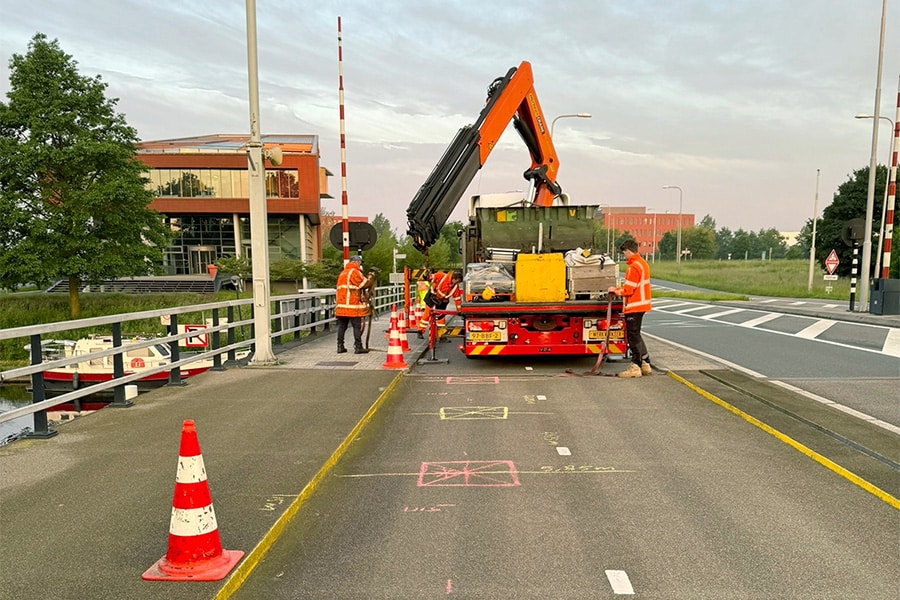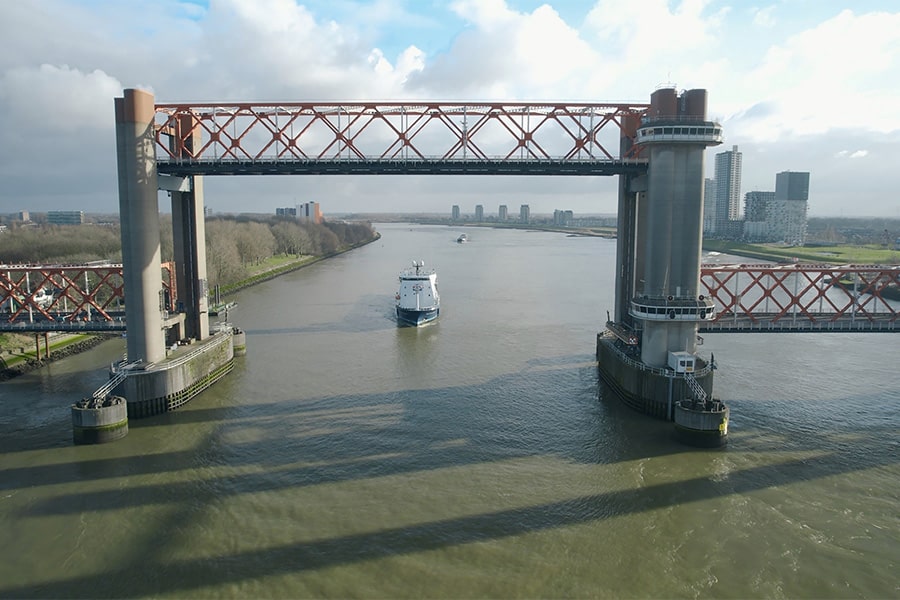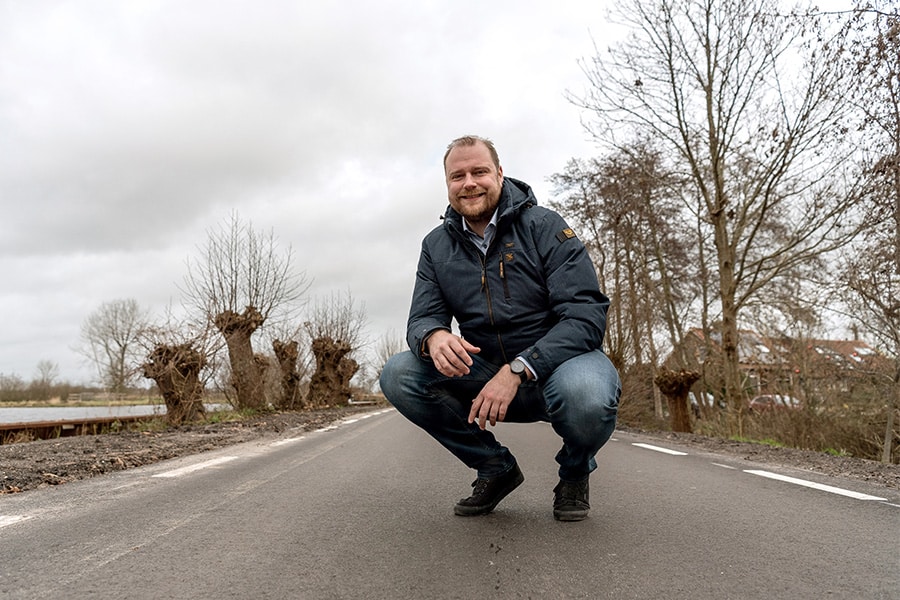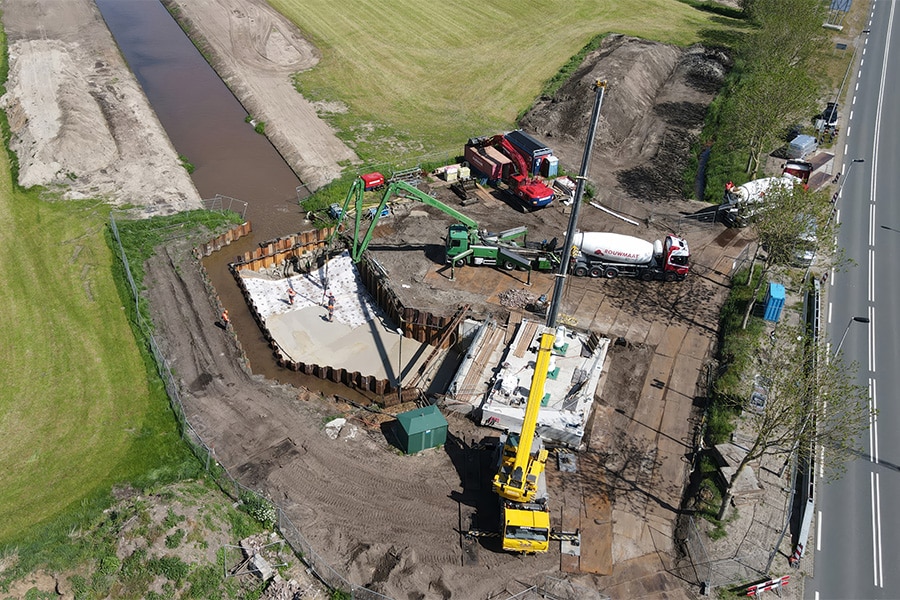
Royal HaskoningDHV broadly intertwined in RijnlandRoute project
Royal HaskoningDHV is co-responsible for the RijnlandRoute project of the province of South Holland as advisor to construction consortium COMOL5. Royal HaskoningDHV is broadly involved in the construction project with involvement in both the design, permits and part of the execution supervision. Bart Peerdeman, integral design manager of COMOL5 and also Associate Director Infrastructure Rotterdam at Royal HaskoningDHV, talks about the company's involvement in the project.
"Royal HaskoningDHV is in the picture in various disciplines surrounding the RijnlandRoute. These include the design of the structures and the tunnel, design of installations and advice on, for example, ecology, soil contamination and permits. Our people work in mixed teams, together with people from the construction consortium and other consultancies. Looking at the civil design, we are involved in geotechnical calculations for the foundations, excavation pits, temporary drainage and the final concrete construction of the tunnel and the sunken tunnel. We are also jointly responsible for the design of the flyovers at the A4 motorway. Our extensive experience in the field of digitization and innovation, such as parametric design, is very useful for these designs. The RijnlandRoute has very challenging engineering structures. These extraordinary designs are what Royal Haskoning does extremely well."
A connecting role
Peerdeman has both a technical-substantive and connecting role within the RijnlandRoute project. "I am ultimately responsible for the integral design. Arriving at an integral design requires the continuous search for connection. This certainly applies to my colleagues as well. I also expect them to actively connect with other disciplines within the project, both with design and with realization. That is partly the strength of RoyalHaskoningDHV and it makes us a strong part of the design team."
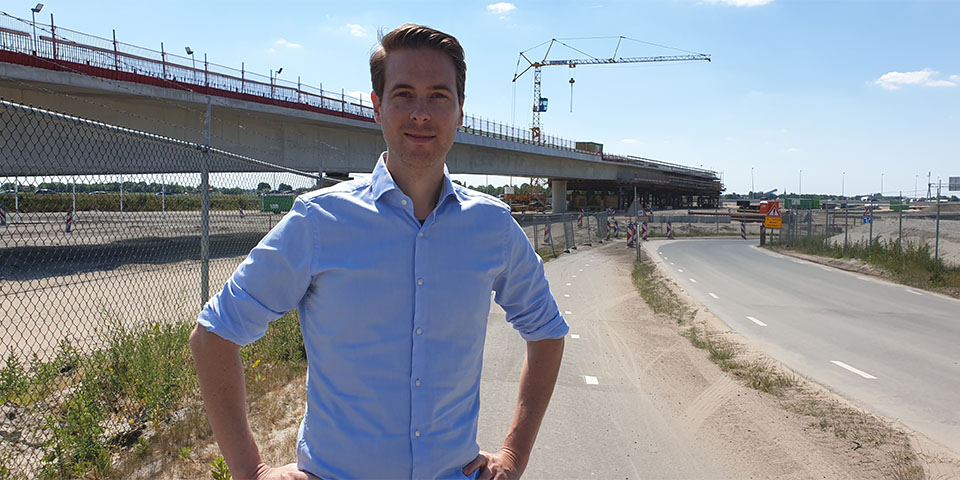
Bart Peerdeman, integral design manager of COMOL5 and also Associate Director Infrastructure Rotterdam at Royal HaskoningDHV.
Strong together
As design manager, Bart Peerdeman is part of the management team led by Rick Pattipeilohy (Project Director COMOL5 on behalf of Mobilis). "My responsibilities are the integrality and quality of the design in conjunction with planning, cost control and quantities of the design. I am also responsible for structural safety. This extends from the design phase and continues into the realization phase. You make the best designs together. We work closely with the realization department. Together we make choices, which often involve a field of tension: meeting the guidelines and requirements of stakeholders can sometimes differ from what people would like to see during realization. Searching for the best possible design for all parties, while at the same time meeting the planning is a continuous challenge. Here we make optimal use of the digital integral 3D models we have created."
A good technical background as a foundation
A characteristic of Royal HaskoningDHV is that it is always able to provide knowledgeable people, who are eager to seek out and are able to engage in cooperation. Peerdeman: "Our basis is a good technical background, from there we think in solutions in all our collaborations."
For optimal design, everything revolves around good communication and coordination with realization, as well as with stakeholders and the environment. Short lines of communication are of the utmost importance. With the RijnlandRoute, the design team sits on the construction site. "With office chairs in the mud on the construction site, you see more, you hear more and you keep more of a sense of the project."
The design process does not stop when realization begins. "Even though we went out after a year of designing, the designing continues. A design process consists of a preliminary design, a final design and an implementation design. We are now in that final design phase," Peerdeman outlines. The large bulk of the design work has been completed and the large design team is winding down. The finalization of the design and "site engineering phase" is being done by smaller teams.
End of the design process
What happens when all the designs and reconciliations are complete? Peerdeman replies, "Then my work stops and I hand everything over to the site engineer. I remain in the picture for outside-to-inside questions about designs, but no new designs are created. The site engineer then stands by to answer questions related to the designs that are there."
